What about alchemy in the Rosicrucian manifestos?
It is often said that the authors of the manifestos were not really occupied with alchemy 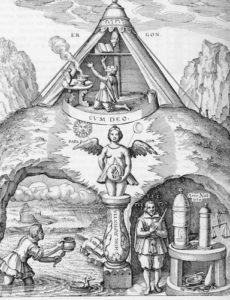 and that the alchemical stamp on Rosicrucianism was put there by men like Michael Maier a few years later. True, the Fama talks of “the ungodly and accursed gold-making” with many imposters. Villains and imposters are also mentioned in the Confessio and the Chymical Wedding. But it also describes laboratory alchemy as a parergon, a supplementary issue – also figuratively presented in the fourth manifesto, the Speculum sophicum 1618 , the mirror of wisdom of the Rosicrucians. The main thing, it was claimed there, the ergon, was Christian piety and communing with God. So the manifestos seem to indicate that they DID know of laboratory alchemy, but that spiritual alchemy was more important for them.
and that the alchemical stamp on Rosicrucianism was put there by men like Michael Maier a few years later. True, the Fama talks of “the ungodly and accursed gold-making” with many imposters. Villains and imposters are also mentioned in the Confessio and the Chymical Wedding. But it also describes laboratory alchemy as a parergon, a supplementary issue – also figuratively presented in the fourth manifesto, the Speculum sophicum 1618 , the mirror of wisdom of the Rosicrucians. The main thing, it was claimed there, the ergon, was Christian piety and communing with God. So the manifestos seem to indicate that they DID know of laboratory alchemy, but that spiritual alchemy was more important for them.
We know that Andreae’s father was highly interested in alchemy, so were several others in the Tübingen circle with Paracelsian inclinations. So also Daniel Mögling who wrote the Speculum. The “Orden der Unzertrennlichen “ founded in 1577, where alchemy and smelting technology were among the chief concerns, might even be the direct model for the Rosicrucian brotherhood says Christopher McIntosh[1]. There are also some early Italian lines, the brothers of the Golden Cross or of the Rosy Cross, a group of alchemists around Naples[2] whose laws seem to have influenced the later Samuel Richter and the Gold-und Rosenkreuzer in Germany.
We must also remember that alchemy was this time’s natural science and that Paracelsian doctors were healing with the help of alchemical remedies, amongst other. And healing was according to the Fama, the main concern and commitment of the Rosicrucians.
My concern here today is to focus on some clear parallels between the alchemical Rosary of the philosophers, the Rosarium philosophporum, and Rosicrucianism, a connection not too often mentioned.
Where does the alchemical Rosarium come from?
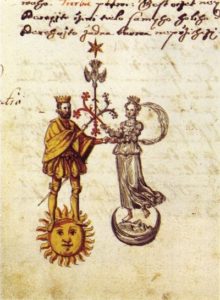 There are quite a few manuscripts, but the first printed edition dates from 1550, Frankfurt. There it is the second part of De Alchimia Opuscula complura veterum philosophorum (Several small writings on alchemy of the ancient philosophers)[3].The book includes 20 woodcuts with a German inscription that illustrate the alchemical process of the Rosary. The text is otherwise in Latin.[4]
There are quite a few manuscripts, but the first printed edition dates from 1550, Frankfurt. There it is the second part of De Alchimia Opuscula complura veterum philosophorum (Several small writings on alchemy of the ancient philosophers)[3].The book includes 20 woodcuts with a German inscription that illustrate the alchemical process of the Rosary. The text is otherwise in Latin.[4]
The book also includes the title page where we see the philosophers discussing the “right way” and the “exact progression” to produce “The Stones of the Wise.” Here it is also said that the “figures” or emblems show how this can be accomplished.
At least we know that there was an alchemical Rosarius philosophorum before that. In Giovanni Lacinius, Pretiosa margarita novella ... Venice, 1546, there is a chapter that is said to be a summary of Arnold de Villanova’s alchemical writings on the preparation of The Stone of the Wise.[5] Arnaldus de Villanova was a Spanish physician, chemist, scientist and scholar in the 13th century. Villanova’s authorship of this first “Rosarius” (of roses) is disputed by some, but in any case, it is quite certain that it is largely based on Arabic sources.
Some of the illustrations are found in another alchemical work: The German Buch der Heiligen Dreifaltigket (The Holy Trinity Book). Its first manuscripts are from approx. 1410 – 1419. The manuscripts describe the alchemical process in Christian terms, combining alchemy and Christian mysticism. The alchemical work on metals, substances and extracts that lead to The stone of the wise is equated with the suffering, death and resurrection of Jesus Christ. Four of this book’s illustrations are almost directly taken over by our Rosarium philosophorum: the two hermaphrodites, the coronation of Mary and the resurrection of Christ.
Rosarium means “rose garden”[6]. But the word also denotes a “rosary” – the Catholic prayer chain as well as the prayer associated with it. Some claim that this alchemical rosary has nothing to do with the last term. I doubt that. For the rosary, the prayer, is closely tied to Mary. In Christian iconography, roses just symbolize the Virgin Mary, the mother of Jesus. The coronation of Mary is the second last emblem of the Rosarium philosophorum. The excerpt from Villanova’s “Rosarius” concludes with: Praise the Trinity and honour the Blessed Virgin Mary. There is also no doubt that the female element in the entire series of emblems and partly the accompanying text is quite strong. Immediately one will think of the symbolism of the rose through all the ages: the feminine, love … Here we also remember the French “Roman de la rose” from the 13th century. A love poem, a dream vision, which became immensely popular. The rose here is the name of the female protagonist, but also the symbol of female sexuality in general. Thus also our thoughts go to the praise of women by the troubadours, as well as to the Grail legend of the Middle Ages.
I would even dare suggest that this “rose” from the rosarium, and other usages of the “rose” as a female symbol, a symbol also of both the Virgin Mary in Christian times, and the goddess Venus earlier, has inspired one part of the name we all know: the Order of the Rose Cross.[7]
After the printed edition of 1550 a number of manuscripts of this work were made, with the emblems in colour and some variations. But the main features are included in all. The manuscripts from the late 16th century to the 19th century are preserved in various libraries. Other alchemist writers also used the emblems, in some reworked form. For instance JD Mylius and Daniel Stolcius .There is an early translation into Czech (1578), in manuscript form and with beautiful colour images. The script is created by Jaroš Griemiller. Interest in alchemy was very strong in the Czech Republic and culminated a few years later under Rudolph II in Prague. Early on, Rosarium was also translated into both German and French. An English translation first appeared in the 18th century, based on manuscripts now preserved in Glasgow (MS Ferguson collection).
Alchemy was much discredited in modern times. It was long considered a pseudo-science (the belief that gold could be made from base metals), a deceptive and inefficient precursor to modern chemistry. It is primarily a consequence of Carl Gustav Jung’s efforts that our view of alchemy has changed drastically. Jung emphasized that alchemy is a spiritual art that has the psychological transformation of the alchemist himself as its main goal. The emblems represent strong archetypes that can be used in the individuation process.
Carl Gustav Jung worked extensively and through many years with alchemy. For him, the rediscovery of alchemy and its psychological significance became a crucial step in shaping his own analytical psychology. The Rosarium Philosophorum of 1550 was the starting point for Jung’s Die Psychologie der Übertragung (The Psychology of Transference), Zürich 1946. The emblems are here subjected to a thorough analysis. But he only deals with the 10 first emblems and ignores the 10 last. I would also claim that dealing with the series only from a psychological view-point, is too one-sided. Alchemy was always holistic, including both the material and the spiritual side.
Parallels of the Rosarium to the Chymical Wedding
But since my knowledge and experience of laboratory alchemy is zero, I will have to concentrate on the spiritual side and its connection to Rosicrucianism.
John Dee’s Monas Hieroglyphica is a “universal” sign that also adorned the letter of invitation Christian Rosenkreutz receives at the start of the Chymical Wedding .
This very Monas is also mentioned in the Czech manuscript of 1578, the above mentioned Griemiller Rosarium. Both in writing and as a picture:
Now the whole plot of the Chymical Wedding and the Rosarium is about a central main theme: the death and resurrection of a king and queen. A process described in detail, both during the last days of the Chymical Wedding and the text, but especially the 20 emblems of the Rosarium. Plot and symbols somehow match.
The Chymical Wedding also includes a rather strange part on the fifth day. It is almost a subplot to the main one, repeating its theme. It is about Venus:
Now as soon as we stepped in, I saw the most precious thing that Nature ever created, for this vault had no light other than that from certain huge great carbuncles, and this (as I was informed) was the King’s Treasury. But the main and most glorious thing that I saw here was a sepulchre (which stood in the middle) so rich that I wondered that it was not better guarded. To which the page answered me, that I had good reason to be thankful to my planet, by whose influence it was that I had now seen certain pieces which no other human eye (except the King’s family) had ever had a view of.
This sepulchre was triangular, and had in the middle of it a vessel of polished copper; the rest was of pure gold and precious stones. In the vessel stood an angel, who held in his arms an unknown tree, which continually dropped fruit into the vessel; and as often as the fruit fell into the vessel, it turned into water, and ran out from there into three small golden vessels standing by. This little altar was supported by these three animals, an eagle, an ox and a lion, which stood on an exceedingly costly base.
I asked my page what this might signify.
“Here,” he said, “lies buried Lady Venus, that beauty which has undone many a great man, both in fortune, honour, blessing and prosperity.” After which he showed me a copper door on the pavement.
“Here,” he said, “if you please, we may go further down.”
“I still follow you,” I replied.
So I went down the steps, where it was exceedingly dark, but the page immediately opened a little chest, in which stood a small ever-burning taper, at which he kindled one of the torches which lay by …
Then I saw a rich bed ready made, hung about with curious curtains, one of which he drew aside, where I saw the Lady Venus stark naked (for he heaved up the coverlets too) lying there in such beauty, and in such a surprising fashion, that I was almost beside myself; neither do I yet know whether it was a piece thus carved, or a human corpse that lay dead there. For she was altogether immovable, and yet I dared not touch her. So she was again covered, and the curtain drawn before her, yet she was still (as it were) in my eye. But I soon saw behind the bed a tablet on which it was written as follows:
When the fruit of my tree shall be quite melted down then I shall awake and be the mother of a King.
I asked my page about this writing, but he laughed, with the promise that I should know it too. So, he putting out the torch, we ascended again. Then I had a better look at all the little doors, and first found that on every corner there burned a small taper of pyrites, of which I had before taken no notice, for the fire was so clear that it looked much more like a stone than a taper. From this heat the tree was forced continually to melt, yet it still produced new fruit. Now behold (said the page) what I heard revealed to the King by Atlas. When the tree (he said) shall be quite melted down, then shall Lady Venus awake, and be the mother of a King.
Now Sam Robinson says something quite significant about Christian Rosenkreutz and his role at the end of the Chymical Wedding: “Read the Chymical Wedding carefully. The final result for C.R.C is that he realizes he has a son” [8]. To quote this passage from the Chymical Wedding: But he (the king) laughed at me, saying, ‘There was no need for ceremony; I was HIS FATHER.’
So while Venus is the mother, Christian Rosenkreutz is the father! A kind of parallel wedding!
There are some themes here in this passage of the Chymical Wedding that resound in the Rosarium: Death (the sepulchre), a vessel with a tree on top, distributing fruit, partitioned into three. A beautiful corpse-like goddess (this certainly echoes C.R.C in his tomb) which is going to awake when time is ready, giving birth to a child (which is the Inner Christ born with Böhme, the philosopher’s stone in alchemy, Horus in Egypt, the crown in the Hermetic tree – see Sam’s diagram).
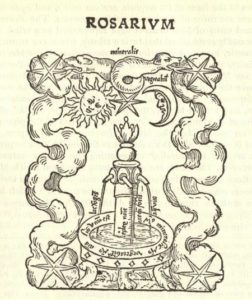 Now the Rosarium opens with a first picture: the well of Mercury with three water jets and a flower with fruits on top.
Now the Rosarium opens with a first picture: the well of Mercury with three water jets and a flower with fruits on top.
This emblem can be explained thus: The three jets of water symbolize three contradictory processes throughout creation – as well as within ourselves – to be united in this well. The first: the corrosive vinegar, is the dissolving element. That produces “nigredo” – or the destruction, the decay – that everything becomes blacker than black. The second, the water of life, is the means of providing a fresh start, a revival, a resurrection. This is what the alchemist describes as “albedo,” the white state in which everything shines. And the third, the Virgin’s milk, is what will nourish the child that arises from the union of contradictions, the union of the Sun and the Moon. It is the new that is born in the process. It is this nourishment that makes this “philosophical child” grow mature. Michael Maier says somewhere: “The stone should be nourished as a child with the Virgin’s milk“. It is the last condition known as “rubedo“. The stage where we achieve the philosopher´s stone.
The wealth of wisdom (and the Heavenly Virgin) are described in the Wisdom Books of the Hebrew Scriptures, both material and spiritual. Wisdom and the stone are also praised in the Rosarium as providing health, wealth and spiritual benefits. The text says also: The Queen hates death and poverty. She excels both Silver and Gold and precious stones. Here also Salomon is brought in to praise the Queen from the East , adorned as if she was a bride (part 3 on the alchemy website).
The description of riches of the sepulchre of Venus in the Chymical Wedding fits neatly to that.
Parallels of the Rosarium to the Rosicrucian alchemist Michael Maier, especially in his Atalanta fugiens[9]
Michael Maier had the Rosarium in mind several times when creating his opus. Just to give you two obvious examples.
The text in the Rosarium runs as following (part 2 on the alchemy website):
The Philosopher: Make a round circle of the Man and Woman, and draw out of it a quadrangle, and out of the quadrangle a triangle, make a round circle, and thou shalt have the Stone of the Philosophers.
Emblem 21 in the Atalanta has the following heading:
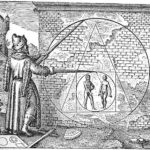 Make of the man and woman a Circle, of that a Quadrangle, of this a Triangle, of the same a Circle and you will have the Stone of the Philosophers.
Make of the man and woman a Circle, of that a Quadrangle, of this a Triangle, of the same a Circle and you will have the Stone of the Philosophers.
This then is followed by a discourse in which both Plato and Aristotle partake, as these are also figures highly present and discussing in the Rosarium throughout the Latin texts.
There is also emblem 27 in the Atalana which is directly influenced by the Rosarium. It has the following heading:
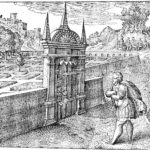 He that endeavours to enter into the Philosophers’ Rosarye without a key, is like him who would walk without feet.
He that endeavours to enter into the Philosophers’ Rosarye without a key, is like him who would walk without feet.
We certainly need a key to the “rose-garden” of the Rosarium too.
The Atalanta then gives a discourse where we can read, amongst other.
But Chemistry chiefly has two subjects as its two legs, one of which is the key, the other is the bolt. With these the Philosophick Rosary although locked on every side may be opened, and free admittance given to such as have a Right to enter … If a man knows how to number well and distinguish the signs he will certainly find this Key in the Northern Hemisphere of the Zodiack, and the bolt in the Southern; and being Master of these it will be easy to open the Door and enter.
And in the very entrance he will see Venus and her beloved Adonis, for she hath tinged the White Rose of a Purple Colour with her Blood … Moreover the Fume of Common Sulphur makes Red Roses White if it touch them, and so on the contrary the Spirit of Vitriol and Aqua Fortis refreshes them with a deep or full Red Colour which endureth …The Rose is sacred to Venus in regard of that Beauty in which it surpasseth all Flowers; for it is a Virgin which Nature hath Armed that it might not be violated without revenge and punishment.
Red and white roses (or at least flowers) can also clearly be seen on emblem 2, 3 and 4 of the Rosarium (colours show in manuscripts), where they are held by the king and queen, handing them to each other, and with the dove from above reaching out yet another rose. The solar and the lunar force are united by the dove.
But we also find this text (see part 3 on the Alchemy Website) in the Rosarium
Rosarius: Whosoever will enter into our Rosary and there see and have roses as well as white as red, without that base thing with which our locks are locked, is likened onto a man that is desirous to go without feet, because in that base thing there is a key by which the seven metallic gates are opened, and without that base thing the precious work can never be effected. Washing is the ending of blackness, or purifying it, until white be made perfectly white, and red plain red, for Azoth and fire do take away the obscurity of the fire.
The Parabola of Madathanus and the Rosarium
Ein Güldener Tractat vom philosophischen Steine (a golden treatise of the philosophical stone) is a text which we find in the Secret Symbols of the Rosicrucians, Altona 1785-88. But it is a reprint of an earlier book from 1625. Here we also find the dream-like alchemical parable, most likely written by Henricus Madathanus (Adrian von Mynsicht), also a Paracelsian doctor of the 17th century. He also wrote the alchemical romance Aureum seculum redivivum. Both texts, by the way, also allude to the Brothers of the Golden Cross. And in both texts we find references to the Song of Salomon, this famous old song about love that surely permeates all the works mentioned here.
About the Parabola we can read on Wikipedia:
is a Rosicrucian allegory, bearing many similarities to The Chemical Wedding of Christian Rosenkreutz, it is steeped in alchemical imagery. It deals with the journey of initiation of an unknown narrator, who, after many trials, enters the Rose Garden and bears witness to the dissolution and reconstitution of a pair of royal lovers into a King and Queen.
The text one can read in English on the Alchemy Website. [10]
Now what do we find here?
After I had descended I saw standing a lovely rosebush on which beautiful red and white roses were growing; but there were more of the red than of the white. I broke off some of them and put them on my hat.
White and red roses again AND a clear echo to the Chymical Wedding where Christian Rosenkreutz stuck four red roses in his hat on the first day of his journey.
The text in the parable continues thus:
… I knew the plan of the garden better than they, although I had never been in it, and I went straight up to the gate. This was locked fast, and one could not discover even a key-hole from the outside. But in the gate I saw a tiny round hole which one could not distinguish with ordinary eyes, and I thought it was necessary to open the gate there. I took out my skeleton-key, especially prepared for this purpose, unlocked the gate and walked in. …
And so in God’s Name I wandered further into the garden. There in the midst of it I found a little flower-bed, square, each of its four sides six measuring-rods long, and covered with rosebushes, on which the roses were blossoming beautifully. Since it had rained a little and the sun was shining, a very lovely rainbow appeared. After I left the flower-bed and had come to the place where I was to help the maidens, behold! instead of the walls there stood a low wattled fence. And the most beautiful maiden, dressed all in white satin, with the most handsome youth, clad in scarlet, went past the rose-garden, one leading the other by the arm and carrying many fragrant roses in their hands. I spoke to them, asking how they had come over the fence. “My dearest bridegroom here helped me over,” she said, “and now we are leaving this lovely garden to go to our room to be together.”
The description of this rose-garden indeed echoes the emblem 27 of the Atalanta (see above) and also the roses of the Rosarium.
Now follows the dissolution of the loving couple and their final resurrection, a description which almost sounds like a description of the 20 emblems of the Rosarium. See for instance this: But before they were placed inside, all the clothing and jewels they wore were taken from them so they had to live together stripped naked in their prison. Emblem 2 of the Rosarium shows the couple richly dressed, in emblem 3 they are quite naked.
The story goes on:
No one was assigned to serve them, but all their necessities of food and drink — the latter drawn from the stream mentioned above — were placed inside before the door of the room was securely closed, locked, sealed with the seal of the Brotherhood, and I was placed on guard outside. … I also knew that the Brotherhood did not lie, always did what it said, and certainly performed its work with diligence. However, I could change nothing, and besides, the locked room was situated in the midst of a strong tower, encircled by strong bulwarks and high walls, and since one could warm the room by a moderate but constant fire, I took up my task in God’s Name, beginning to heat the room in order to protect the imprisoned married couple from the cold. But what happened? As soon as they felt the faintest breath of warmth, they embraced each other so lovingly that the like of it will not be seen again. And they remained together in such ardour that the heart of the young bridegroom disappeared in burning love, and his entire body melted and sank down in the arms of his beloved. When the latter, who had loved him no less than he had loved her, saw this, she began to lament, weeping bitterly over him and, so to say, buried him in such a flood of tears that one could no longer see what had happened to him. But her lamenting and weeping lasted only for a short time, for because of her great heart-sorrow she did not wish to live longer, and died of her own free will. …
The description of the rising water, descending again during the process, the rainbow, the rising vapours and the descending dew, the returning spirit and soul of the queen – this all echoes both the emblems of the Rosarium and the Chymical Wedding alike …
So this parable indeed seems to be a kind of mixture of these two alchemical writings, plus Maier’s Atalanta. And I am convinced the author (Mynsicht) in the 1620ies knew all three quite well.
Final remarks
We know that Jakob Böhme to a large extent used alchemical terminology with his Christian mysticism, we know that alchemy with all its facets (laboratory and spiritual) played a major part with the Gold- und Rosenkreuzer and all the Orders influenced by them after their time. But one thing that has struck me while going through the emblems of the Rosarium: You just have to quit all prudishness. Especially emblem 5 and 11 are quite daring and erotic, emblem 5 is right out called coitus.
So there sure were some quite powerful sexual connotations there, and probably in the alchemical writings of former time in general.
Could this have inspired the sexual magic of some later Rosicrucian Orders past and present?
Christine Eike
On behalf of our fans, thank you Christine Eike for another amazing post!
[1] The Rosicrucians. The History, mythology and rituals of an Esoteric Order 1997 page 22 and page 53
[2] Giordano Bruno and the Rosicrucians. A mystery unveiled, among magic, alchemy and philosophy by Guido del Giudice. See also Ian H. Gladwin’s article The Bon Pasteur Lodge – A Masonic Prototype for the Gold and Rose Cross? https://pansophers.com/bon_pasteur/. See also his The Chymical Romance of the Florentine Platonic Academy.
[3] You can find the original here: https://www.e-rara.ch/zut/doi/10.3931/e-rara-24905
[4] I have written a larger blog post in Norwegian about the Rosarium philosophorum, giving all the images from the printed version + some manuscripts and dealing with all the 20 emblems, one by one, here: http://hermetisme-gnosis02.blogspot.com/2012/01/. The whole Latin text in an English translation one can find here: https://www.alchemywebsite.com/rosary0.html
[5] An English translation see: https://www.alchemywebsite.com/arnoldus.html
[6] The Sufi Rose garden of secrets will be dealt with by Ian H. Gladwin.
[7] Or as Ian H. Gladwin said in a remark to me: Early Pansophy was an approach to merge philosophy and esoteric doctrine that applied to the same cosmology as the Heavenly Venus (Rose) united with the terrestrial (cross of matter). He will further elaborate on this later on.
[8] https://pansophers.com/pansophic-manifestos-diagram/
[9] The text in English can be read here: https://www.alchemywebsite.com/atalanta.html
[10] https://www.alchemywebsite.com/parabola.html

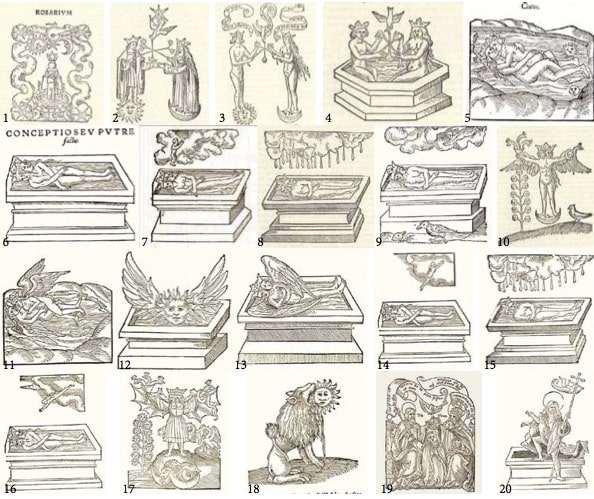
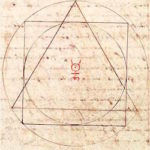
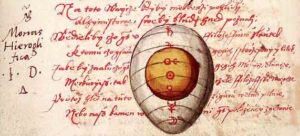
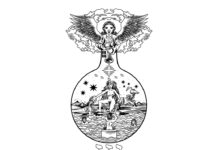
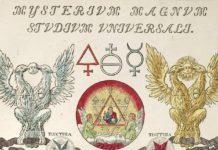
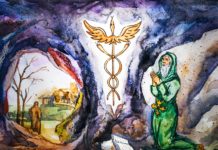







Thank you, Christine. I have read this once tonight; admittedly in a somewhat cursory manner (I was multi-tasking). I will read it several more times over the next couple of weeks in a much more focused effort.
You have diligently worked to expose several parallels that I have never seen, previously, but wish that I had. Your observations appear to be original, yet, true to what is understood to be the intent of the Alchemists. Regarding sex magic, could it be that, just as there is spiritual alchemy which directs alchemy toward a higher end than this material world has to offer, so does sex magic direct the union of the sexes to a higher, loftier purpose than such temporal motivations as pleasure and reproduction? It seems to me that something of a fiery, alchemical transformation (or even a transmutation) is experienced when the two shall be as one. When such baser things as “I” and “you” have “died” or melted away, and “us” emerges triumphant as the phoenix from the ashes, the vision or perspective of the individuals is transmuted/transformed into one of “us.” The man is somehow more complete with a more perfect understanding. Likewise, the woman is somehow more complete with a more perfect understanding. It is a truly iterative matter. Two don’t become as one overnight, but by degrees. Resurrection means to rise, again. If male and female were separated in the descent into matter, than for human creation to rise up, again, to where they were, previously, involves union: The two become one. This is a drama re-lived with each couple; a drama most are not aware of, I fear. Anyway, I echo your advice against prudishness. Through the teachings of these Alchemists, I think we begin to recognize that sexual union is not dirty, per se, although it is necessarily EARTHy. The Alchemical teachings indicate that it is as physical as practical alchemy, and as spiritually transforming as spiritual alchemy.
I look forward to reading your article several more times. Kudos to you, and thank you!